Polar bears and narwhal: wildlife viewing in Nunavut
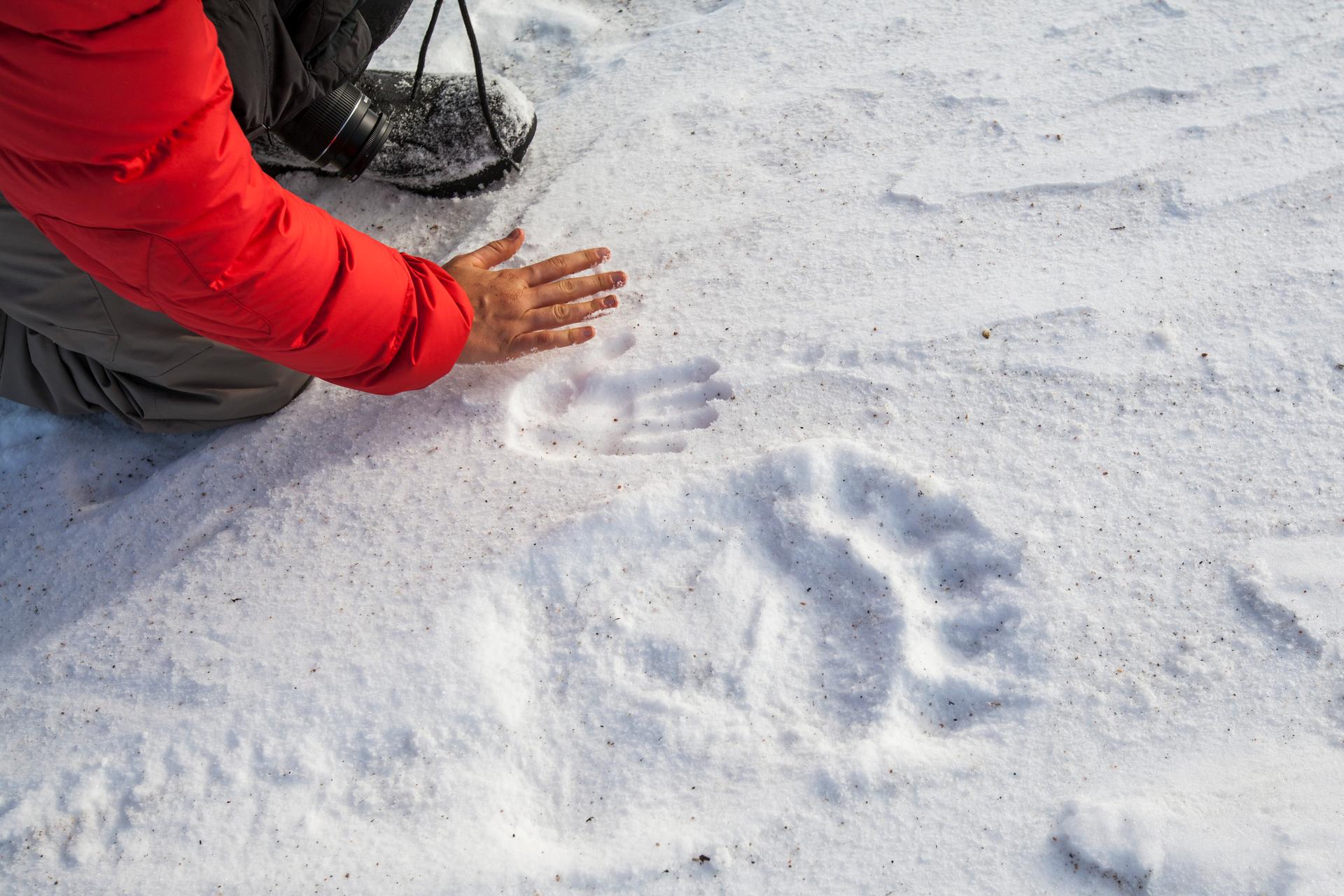
There’s no denying it: Nunavut isn’t home to the easiest of weather. Cold temperatures, freezing waters and long winters make for at times challenging living. Despite these challenges, or maybe because of them, the territory is also home to some of the largest, strongest and strangest animals in the world. These are the mythical animals you hear about in books or movies, but you can easily view them in person during a trip to Nunavut.
When the ice begins to melt and the temperature heats up, Nunavut is home to some of the best wildlife viewing in the world. Here are some of the animals you might see, and how you can go about seeing them.
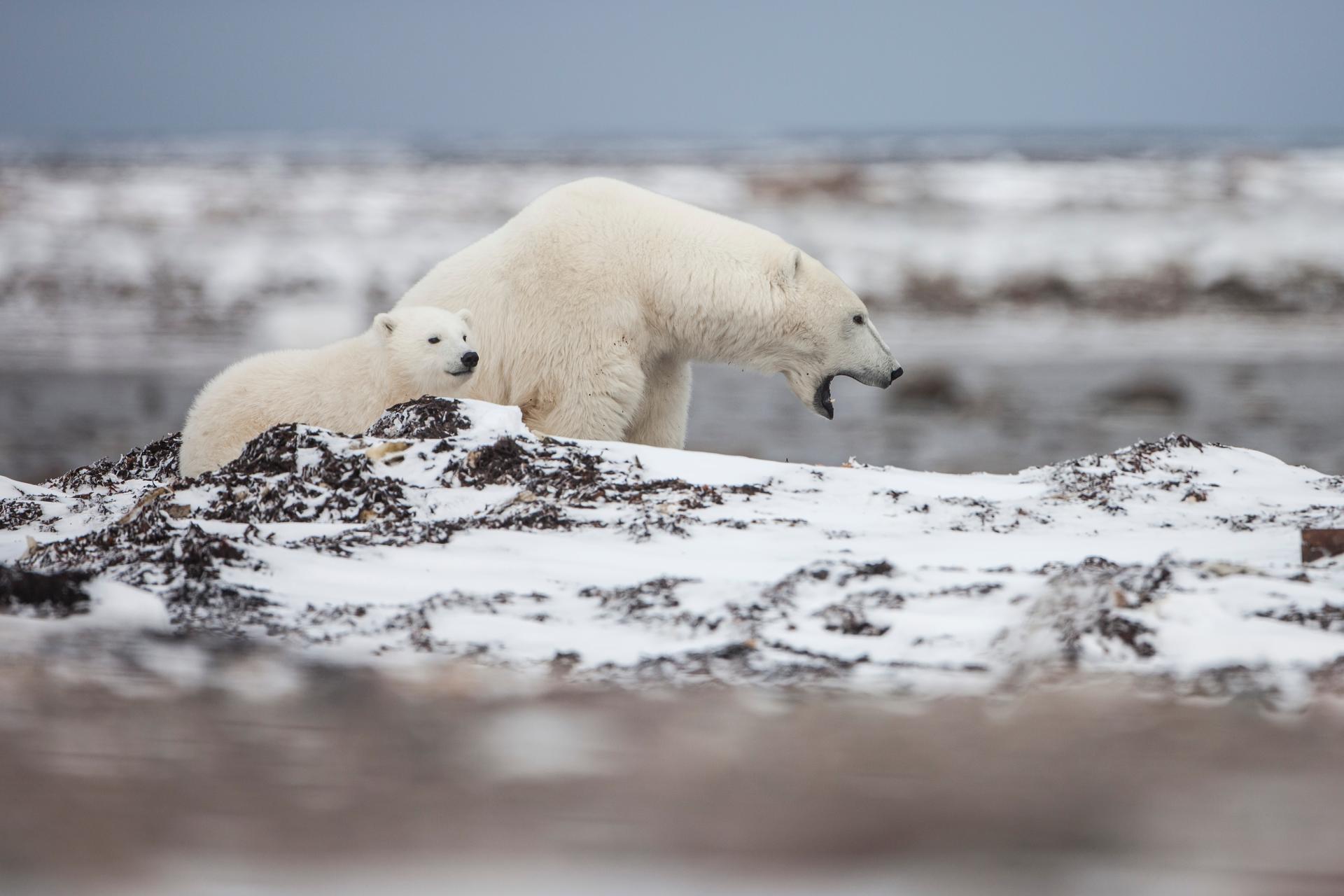
Polar bears
Polar bears, or 'Nanuq' in Inuktitut, are probably the most widely recognized symbols of the Arctic. These giant white creatures roam the floe edge, hunting for seals and other prey. When you look through the lens of your camera at a mother polar bear and two tiny cubs trailing behind, cute is probably the word that comes to mind. But make no mistake: these animals are extremely dangerous. They're powerful hunters, and males can grow up to 10 feet in height, and weigh over 1,500 pounds. In other words, that camera lens is going to be a zoom lens.
Polar bear watching is an incredible experience combining sheer beauty with thrilling proximity. You'll want to connect with a polar bear expert in a community like Arviat, Hall Beach or Repulse Bay. These guides know exactly how close you can get, and where you're likely to find these incredible animals.
For a unique experience, join Arctic Kingdom for a fly-in polar bear migration safari. You'll fly into a camp south of Arviat, along the same route that polar bears migrate in search of sea ice, trying aerial photography during the trip. Then, at the camp, you'll have unparalleled views of the surrounding area, home to polar bears and other animals, like arctic fox and wolverine.
Muskox
The huge shaggy coats of muskox are unmistakable -- every animal looks like cousin Itt from the Addams Family. Dating back to the Pleistocene Ice Age, muskox migrated into Nunavut around 150,000 years ago, alongside the equally shaggy wooly mammoth.
Today, around 60,000 muskox remain in Nunavut, usually traveling in herds of 10 to 20 animals. If you want to see the shaggy coats and curved horns in person, hook up with a local guide in Cambridge Bay, Gjoa Haven or Grise Fiord. Or, grab the binoculars and keep a lookout for muskox during a Northwest Passage cruise with Adventure Canada
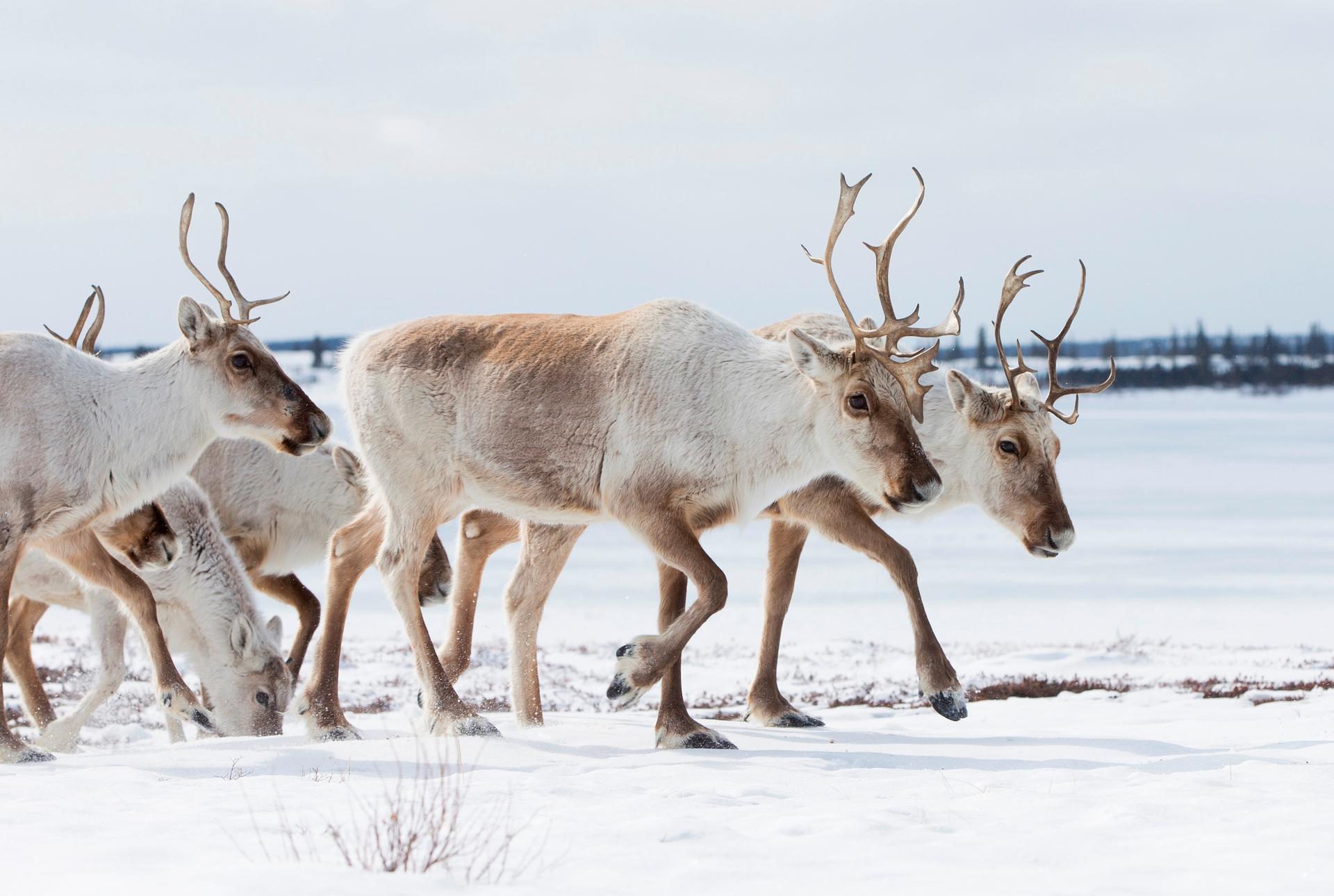
Caribou
A little skinnier than the muskox but no less impressive, more than 750,000 caribou live in Nunavut. These animals travel in magnificent herds, migrating over the tundra as they have done for thousands of years.
Caribou are the most important land animal to the Inuit, providing them with food, clothing, tools and shelter. Locals know the migration patterns of these animals, which for you means the opportunity to get close to them. Communities like Baker Lake, Cambridge Bay, Chesterfield Inlet, and Repulse Bay are great place to connect with local guides and head out to view caribou.
Want your wildlife viewing to be a little more adventurous? Marvel at thousands of caribou as you raft down the Burnside River with Canadian River Expeditions. Whether you’re a beginner or an expert paddler, your guides will navigate river waters while you focus on enjoying the remarkable journey; your own, and that of the Bathurst Inlet caribou.
Walrus
Remember the walrus from the Alice in Wonderland movie? In his suit and his hat, smoking a cigar? Yeah, real walrus aren’t like that at all, except for maybe the moustache. They tend to roll around, growling at each other and clumsily fighting over the best place to tan.
This doesn’t make walrus viewing any less interesting. The animals are massive, reaching up to 13 feet in length and weighing over 4,000 pounds. When two rival males perk up, showing each other their lengthy tusks and starting a shoving match, well, you better believe you’ll take notice.
In many of Nunavut’s waterfront communities, like Coral Harbour, Grise Fiord, Hall Beach, and Igloolik, you’ll be able to hop on a boat tour and visit walrus where they spend their time: out on the ice.
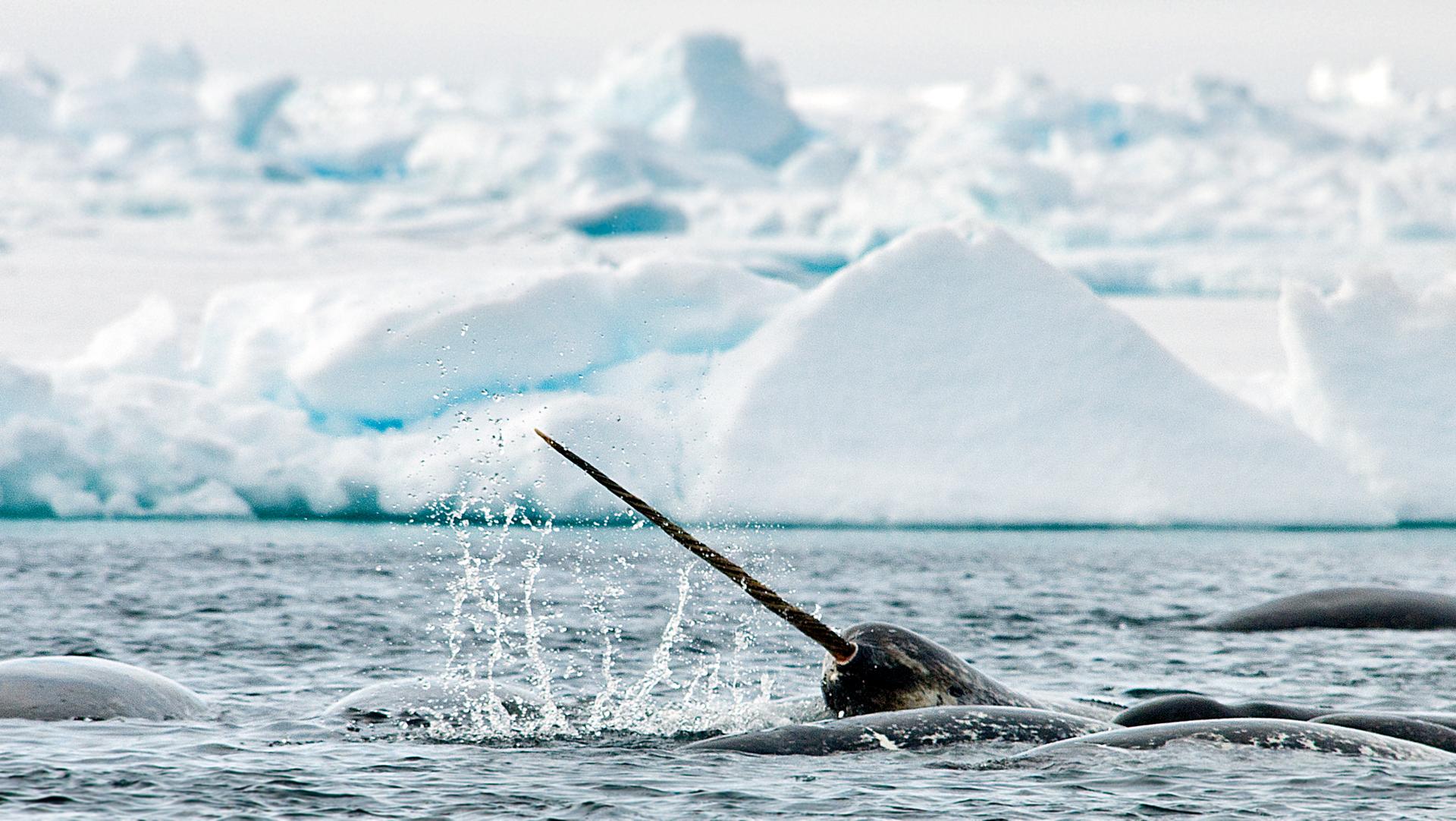
Narwhal
The unicorns of the sea! Narwhal are a strange, incredible species of whales, with long tusks extending up to 10 feet from their jaws. Despite the appearance, these tusks aren't actually used for fighting. In fact, we're not completely sure what purpose the tusks serve, though scientists believe it could be for gathering information from the water and even communicating with their colleagues.
Narwhals travel in pods of between four and 20 animals and spend most of the year feeding on squid and flatfish beneath the ice. In the summer, though, they move closer to shore, which means it's prime time for narwhal-viewing expeditions. Connect with a local guide in Arctic Bay, Pond Inlet or Resolute for the chance to see these mythical beasts in person. Arctic Kingdom also offers a narwhal and polar bear safari that will potentially expose you to hundreds of narwhal as they feed on the floe edge, just steps from your tent.
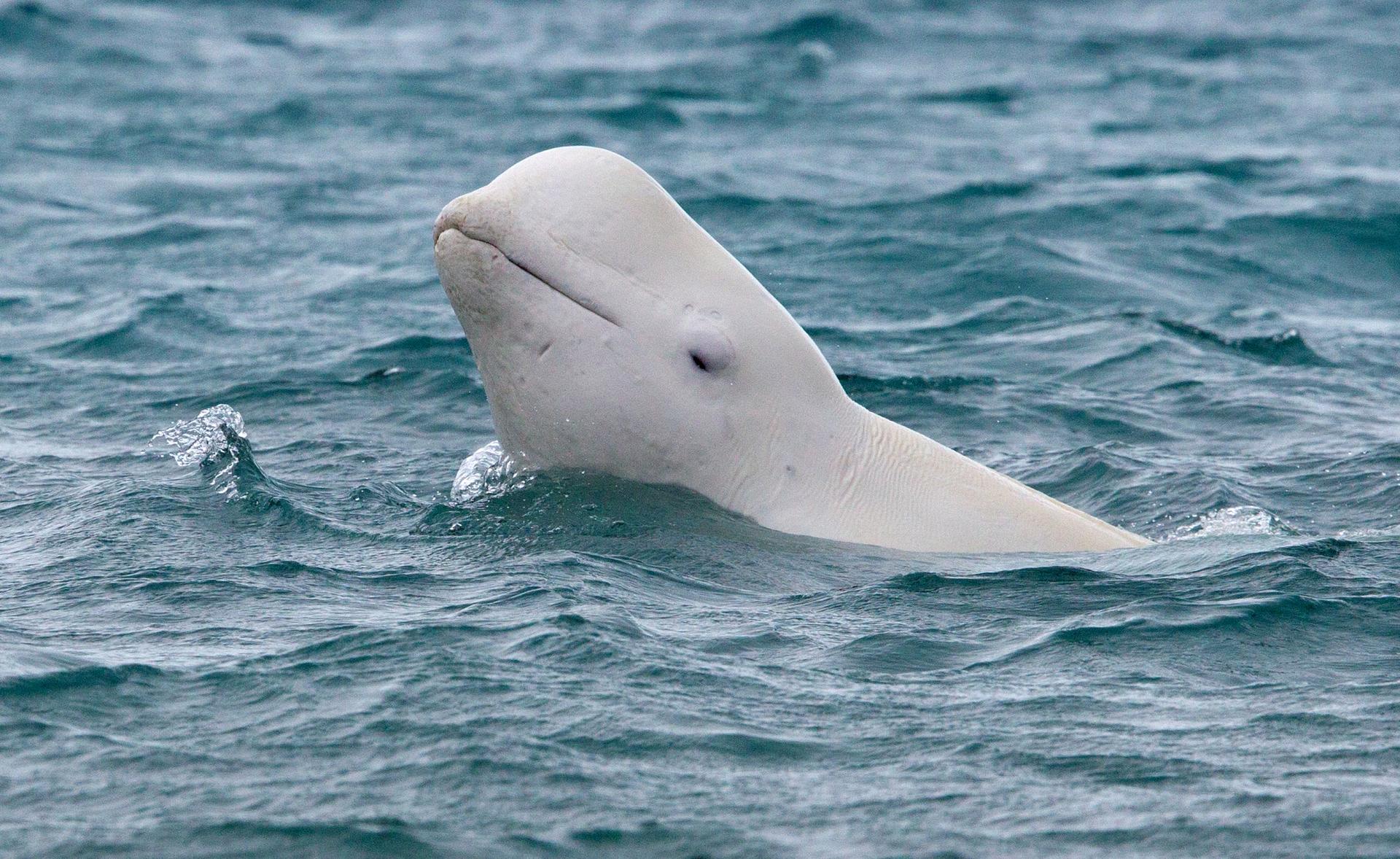
Belugas
From the narwhal we move to its cousin: the beautiful white beluga. These playful whales squeak and splash, congregating in pods at the mouth of several Nunavut rivers. Guides in the communities of Arviat, Chesterfield Inlet, Rankin Inlet and Whale Cove can take you out to see beluga from land or by boat.
But if you really want the absolute best beluga-watching experience, pay a visit to Arctic Watch. This incredible camp at the remote Cunningham Inlet, some 2,000 beluga whales play, molt, mate and nurse their young just offshore. Nowhere else in the world do more whales gather so consistently. You can literally walk 15 minutes, set up a camera, and take pictures of hundreds and hundreds of whales, or climb a special tower and photograph them from above. You just won't beat this beluga-viewing.
Bowhead whales
Rounding out the marine wildlife in Nunavut is the biggest of the bunch: the bowhead whale. These gentle giants can weigh up to 136 tons, second only to the blue whale in mass, and actually possessing the largest mouth of any animal. The dark-colored whales also reach a remarkable 60 feet in length. There's just no way to describe the powerful effect of getting close to an animal so large. You really have to see it to believe!
Bowhead whales spend the entire year in the waters of Nunavut, many along the east coast of Baffin Island. To see them, pay a visit to Ninginganiq National Wildlife Area at Isabella Bay, the world's first sanctuary to protect these whales. Every summer, up to 200 of these whales will feed and rest in this area. Hop on a tour with Adventure Canada, and get out in the water with some of the biggest animals in the world.
Discover more about wildlife viewing and connect with tour operators on the Nunavut Tourism website.